Passengers 48 Fatalities 13 Date 3 September 1989 Injuries (nonfatal) 34 Survivor 41 | Crew 6 Survivors 41 Number of deaths 13 | |
 | ||
Summary Major navigational error resulting in fuel exhaustion Destination Val de Cans International Airport Similar VASP Flight 168, Copa Airlines Flight 201, First Air Flight 6560 | ||
Varig Flight 254 was a Boeing 737-241, c/n 21006/398, registration PP-VMK, on a scheduled passenger flight from São Paulo, Brazil, to Belém, Pará, Brazil, with several intermediate stopovers, on 3 September 1989. Prior to takeoff from Marabá, Pará, towards the final destination, the crew entered an incorrect heading into the flight computer. Instead of flying northeast toward its destination, the plane flew due west and after some time was over a remote area of the Amazon jungle. Attempts to reach an alternative airport were unsuccessful, and the plane eventually ran out of fuel. The pilot made a belly landing in the jungle, 1,050 mi (1,690 km) northwest of Rio de Janeiro. There were 54 occupants on board—48 passengers and a crew of six; 13 passengers died, and many more sustained serious injuries. The survivors were rescued two days later.
Contents
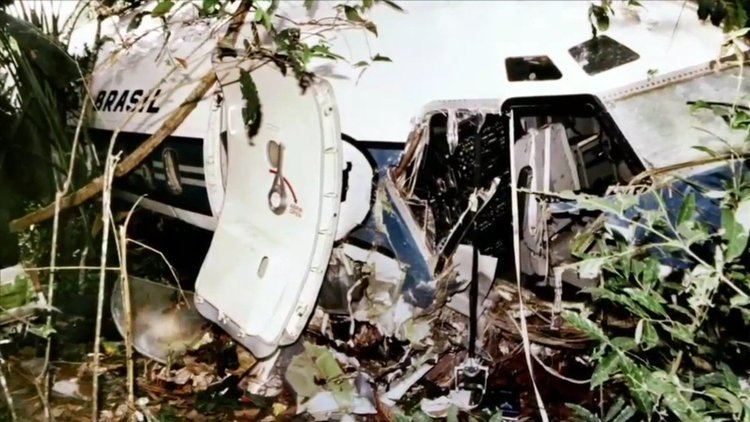
Early moments of the flight
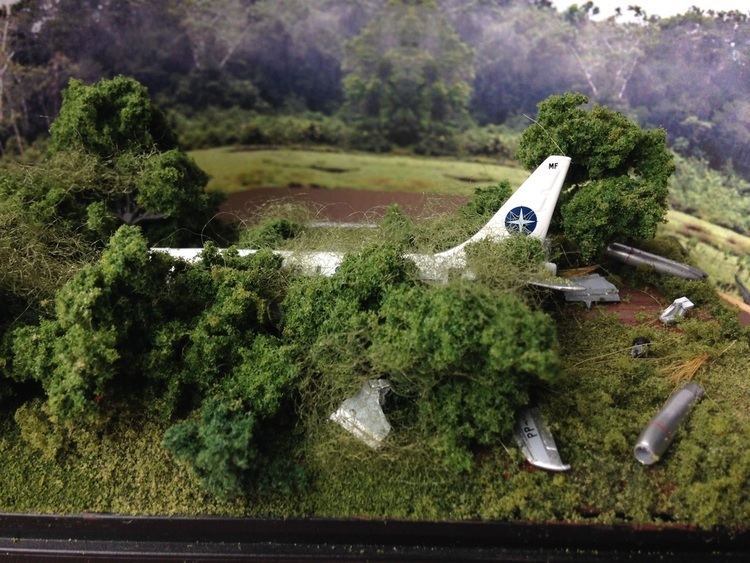
The flight was a scheduled service from São Paulo to Belém with stopovers in Uberaba, Uberlândia, Goiânia, Brasília, Imperatriz, Marabá, and finally Belém. The São Paulo–Belém route had an approximate duration of eight hours and 20 minutes. At 9:43, flight 254 left Guarulhos International Airport, São Paulo, heading towards Belém. The flight crew consisted of 32-year-old Captain Cézar Augusto Padula Garcez, First Officer Nilson de Souza Zille, 29, and four flight attendants. The flight went smoothly through all the stops, and at 17:20, the crew was arranging the final preparations at Marabá Airport while the passengers were boarding.
Incident
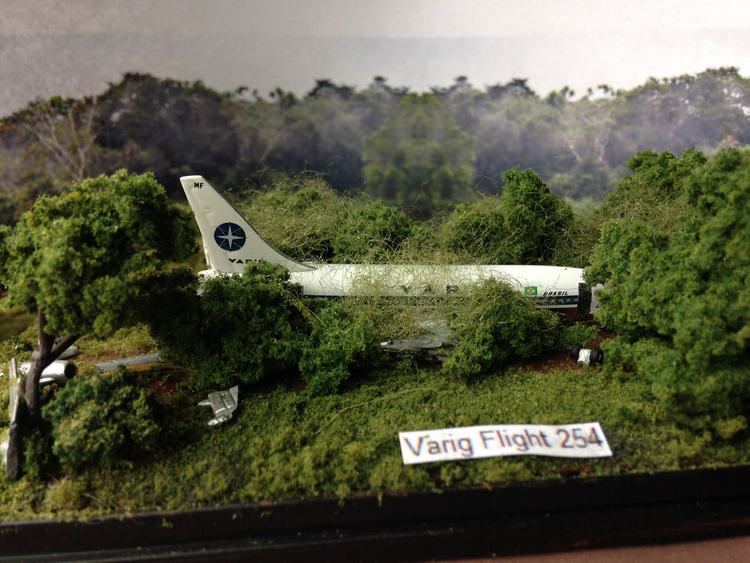
While First Officer Zille was making an external inspection of the aircraft, Captain Garcez consulted the flight plan for the magnetic heading to Belém; the Flight plan read 0270. Garcez interpreted this as 270 degrees, but the intended meaning was 027.0 degrees. Varig's heading notation for the flight plan was changed to four digits from three while Garcez was on vacation, and it did not explicitly specify the position for the decimal point, which was implicitly located to the left of the rightmost digit. That confusion was the primary cause for the disaster, along with other minor errors. The captain therefore set the left-side Horizontal Situation Indicator (HSI) to 270 degrees, i.e. a due west course. This heading is clearly inconsistent with a route from Marabá to Belém.
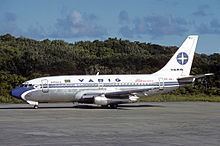
After setting the HSI, Garcez programmed the aircraft performance management system (PMS) to the distance to Belém (187 nmi or 346 km or 215 mi). The flight plan indicated an altitude of 29,000 feet (8,839 m) (FL290), and a leg duration of 48 minutes. When co-captain Zille got to his seat, instead of checking his own flight plan to adjust his HSI – as he was required to do – he only referenced the captain's indicator and set his to match it. At 17:45, flight 254 took off from Marabá, and the autopilot started a long 158° curve to port, instead of the 41 degrees heading turn to starboard that should be expected during a normal flight to Belém. It is reported that the mistake may have been due in part to the crew listening to a Brazil v Chile World Cup football qualifying match on the radio.

When Garcez believed the aircraft to be close to the destination, he attempted to use his VHF radio to communicate with Belém Tower. Failing to do so directly, he used another Varig airliner operating flight RG266, as a radio relay to talk to Belém Airport. When Garcez managed to establish communications with Belém, he requested descent clearance, and received it. Upon performing his descent, the captain found it very odd that he could not recognize any of the characteristic geographical features of the Belém area (such as the Marajó Island and the Amazon River estuary), and even asked the Tower Controller if the city was without electricity. In 1989, Belém airport still had no radar, and so the Controller informed Flight 254 that it was the only one in its airspace, and gave it landing clearance.
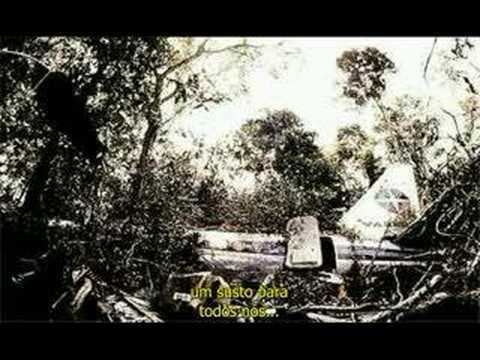
After the PMS started indicating negative distance to its destination, Captain Garcez decided to execute a 180-degree turn and locate Belém visually. He also descended the aircraft to 4,000 feet (1,219 m) and reduced its speed to 200 knots (370 km/h; 230 mph). Reluctant to use the HF radio to request help, the captain decided to take visual reference from a river he located below the plane, believing it to be the Amazon. The river was actually the Xingu, which runs chiefly south-north, while the Amazon runs west-east.
At that time, the flight had already taken 30 minutes longer than scheduled, and the passengers were getting anxious. When First Officer Zille finally noticed their initial mistake, he and the captain decided, after checking their Navigation charts, to make contact with Santarém airport (they believed it to be the closest airport in the vicinity), and made an almost 180-degree turn, now establishing a 350 magnetic course. After some calculations, Garcez realized that the aircraft did not have the necessary fuel to reach Santarém, and he started heading south again (along the now properly identified Xingu river). Finally, he decided to contact Marabá airport again, to find his location. The radio frequency of Goiânia locator was the same as Marabá's, and Garcez tuned to Goiânia's locator (Goiânia is located approximately 675 nmi (1,250 km; 777 mi) south of Marabá). The captain was already nervous, and unfortunately he failed to notice that the tuned locator's Morse code identifier was not consistent with Marabá's beacon.
At 20:05, Belém Center called Flight 254 again demanding a report. The captain stated that he had a 170 magnetic heading to Marabá (in reality it was Goiânia), and that he was receiving a bearing from the Carajás beacon (which actually was the Barra do Garças beacon). Garcez was perplexed when Belém informed him that the Carajás locator had been shut down since 19:30, and the Center decided to try and illuminate the Carajás runway in an attempt to facilitate Flight 254's orientation. Realizing that he would not have enough fuel to reach Belém, the captain decided to head for Carajás Airport, which would have been the correct decision if he had not mistaken Goiânia for Marabá. In another stroke of bad luck, Flight 254 passed, at approximately 20:30, 100 nautical miles (185 km; 115 mi) away from the Serra do Cachimbo Air Force base, a very large airfield which the 737 could have successfully reached.
After that, it was inevitable that the aircraft would have to make a forced landing over the rainforest in the north of Mato Grosso. At the time there were no written procedures for such an emergency situation. Garcez and Zille decided to fly at 8,000 ft (2,438 m) until they ran out of fuel, thus avoiding a possible explosion upon landing, and with the engines on, they would still have hydraulic power to command the aircraft (devices such as the ailerons and flaps are hydraulically activated). They also decided to keep the plane flying slightly above stall speed, which in this case was around 150 kn (278 km/h; 173 mph). During their descent, they spotted very few lights through the jungle (which were the houses of farms that had electrical generators). At 20:40, Garcez informed Belém center that he would be making a forced landing over the jungle, and when he had 15 minutes left of fuel, he informed his passengers of the situation. When there was around 100 kg (220 lb) of fuel remaining, the left engine stopped. The right engine ran for a further two minutes, and then stopped as well.
Even after shutdown, the engines were still windmilling (rotating due to the passage of the air through them). This gave the airplane some rudimentary and unreliable hydraulic control, but was better than having no power at all. Garcez commanded the lowering of the flaps, which only moved to position Two, (around 10 degrees) due to the failing hydraulic system. With the batteries discharged, there was no electrical power and the only four instruments working in the cockpit were the artificial horizon, the altimeter, the airspeed indicator and the vertical speed indicator. The only thing the crew could see on the horizon were faint light spots due to distant forest burnings, and at 21:06, local time, the plane crash-landed over treetops that extended over 50 m (164 ft) above ground.
The deceleration due to the crash was such that passengers without fastened seatbelts were flung to the front of the airplane, and some seats detached from the floor, also racing forward. When the aircraft fell through the foliage, two thick trees tore away both wings, and caused a severe torsion of the fuselage, which contributed to more seats detaching, and to the collapsing of the false roof over the passengers' heads. After its speed slowed to about 35 kn (65 km/h; 40 mph), the aircraft ran for little more than 30 m (33 yd) and stopped, lying on its right side.
Aftermath
Two days later, four of the survivors decided to try to walk and look for help. After about two or three hours of walking in the jungle, a group led by Alfonso Saraiva found the house of the Curunaré farm, in São José do Xingu. That farm had no radio, so they were taken by car to another farm, Serrão da Prata, at 12:30, Tuesday. With the help of radio operator João Capanema Jr., they were able to contact Franca Airport (Franca is a city 400 km north of São Paulo), and at 16:27 of that Tuesday, an EMB Bandeirante airplane from the Brazilian Air Force (FAB) dropped food packages over the wreckage. By 12:00 Wednesday, all survivors had been rescued by the FAB.
